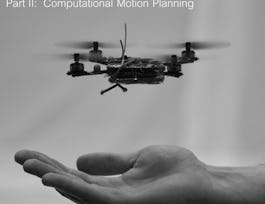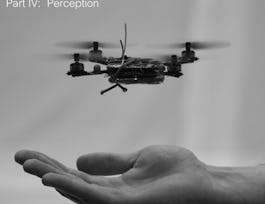How can robots determine their state and properties of the surrounding environment from noisy sensor measurements in time? In this module you will learn how to get robots to incorporate uncertainty into estimating and learning from a dynamic and changing world. Specific topics that will be covered include probabilistic generative models, Bayesian filtering for localization and mapping.


Robotics: Estimation and Learning
This course is part of Robotics Specialization
Taught in English
Some content may not be translated

Instructor: Daniel Lee
31,843 already enrolled
Included with 
Course
(500 reviews)
Skills you'll gain
Details to know

Add to your LinkedIn profile
Course
(500 reviews)
See how employees at top companies are mastering in-demand skills

Build your subject-matter expertise
- Learn new concepts from industry experts
- Gain a foundational understanding of a subject or tool
- Develop job-relevant skills with hands-on projects
- Earn a shareable career certificate


Earn a career certificate
Add this credential to your LinkedIn profile, resume, or CV
Share it on social media and in your performance review

There are 4 modules in this course
We will learn about the Gaussian distribution for parametric modeling in robotics. The Gaussian distribution is the most widely used continuous distribution and provides a useful way to estimate uncertainty and predict in the world. We will start by discussing the one-dimensional Gaussian distribution, and then move on to the multivariate Gaussian distribution. Finally, we will extend the concept to models that use Mixtures of Gaussians.
What's included
9 videos3 readings1 programming assignment
We will learn about the Gaussian distribution for tracking a dynamical system. We will start by discussing the dynamical systems and their impact on probability distributions. This linear Kalman filter system will be described in detail, and, in addition, non-linear filtering systems will be explored.
What's included
5 videos1 programming assignment
We will learn about robotic mapping. Specifically, our goal of this week is to understand a mapping algorithm called Occupancy Grid Mapping based on range measurements. Later in the week, we introduce 3D mapping as well.
What's included
6 videos1 programming assignment
We will learn about robotic localization. Specifically, our goal of this week is to understand a how range measurements, coupled with odometer readings, can place a robot on a map. Later in the week, we introduce 3D localization as well.
What's included
6 videos1 programming assignment
Instructor

Offered by
Recommended if you're interested in Mechanical Engineering

University of Pennsylvania

University of Pennsylvania

Yale University
Why people choose Coursera for their career




Learner reviews
Showing 3 of 500
500 reviews
- 5 stars
58.80%
- 4 stars
20.60%
- 3 stars
12.40%
- 2 stars
4%
- 1 star
4.20%

Open new doors with Coursera Plus
Unlimited access to 7,000+ world-class courses, hands-on projects, and job-ready certificate programs - all included in your subscription
Advance your career with an online degree
Earn a degree from world-class universities - 100% online
Join over 3,400 global companies that choose Coursera for Business
Upskill your employees to excel in the digital economy
Frequently asked questions
Access to lectures and assignments depends on your type of enrollment. If you take a course in audit mode, you will be able to see most course materials for free. To access graded assignments and to earn a Certificate, you will need to purchase the Certificate experience, during or after your audit. If you don't see the audit option:
The course may not offer an audit option. You can try a Free Trial instead, or apply for Financial Aid.
The course may offer 'Full Course, No Certificate' instead. This option lets you see all course materials, submit required assessments, and get a final grade. This also means that you will not be able to purchase a Certificate experience.
When you enroll in the course, you get access to all of the courses in the Specialization, and you earn a certificate when you complete the work. Your electronic Certificate will be added to your Accomplishments page - from there, you can print your Certificate or add it to your LinkedIn profile. If you only want to read and view the course content, you can audit the course for free.
If you subscribed, you get a 7-day free trial during which you can cancel at no penalty. After that, we don’t give refunds, but you can cancel your subscription at any time. See our full refund policy.


